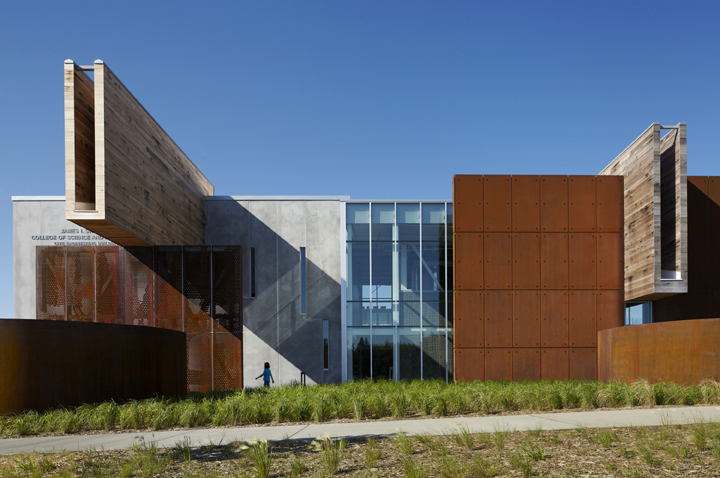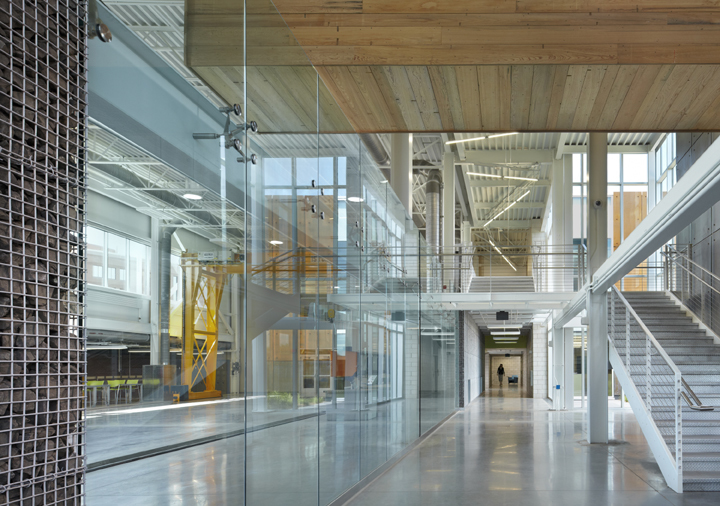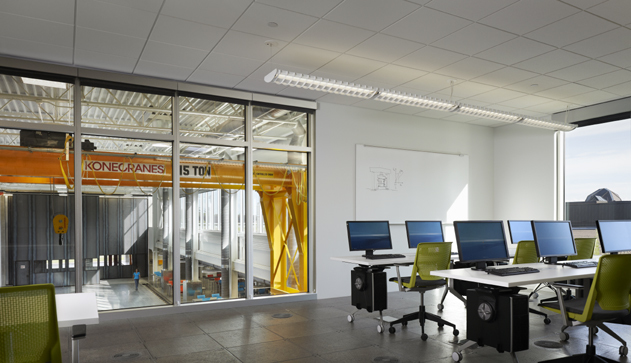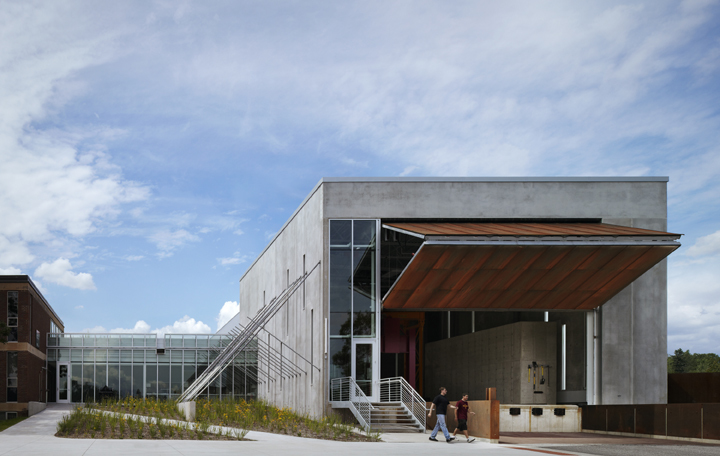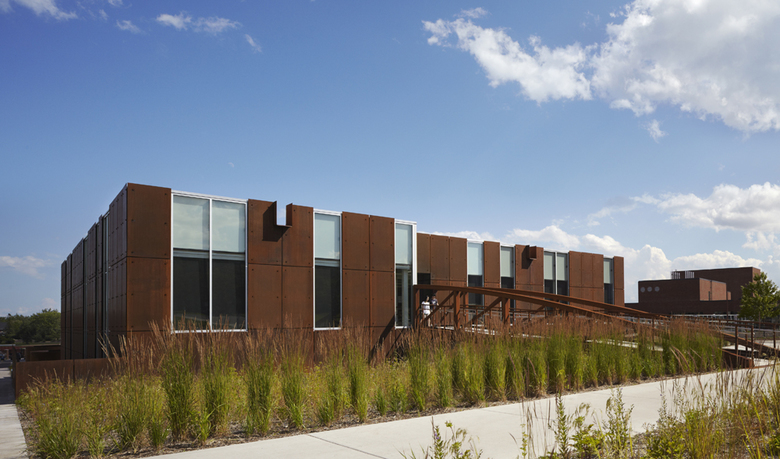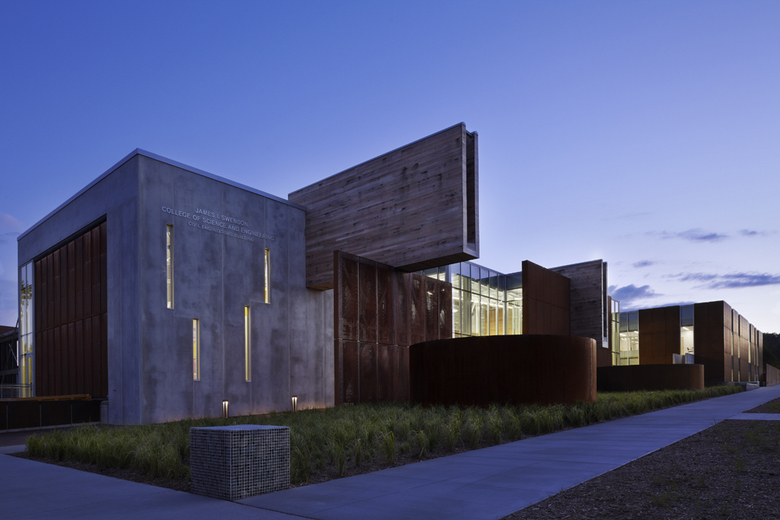UMD James I Swenson Civil Engineering Building
Duluth, MN, アメリカ
Sustainable principles were integral and critical to the design of the new Civil Engineering Building. As an educational facility it became apparent that the building could educate civil engineers on sustainable principles. The building as pedagogical tool became a guiding concept. Designed to display building systems, the facility showcases structural and mechanical processes, and stormwater management techniques.
The design highlights construction and site systems related to the Civil Engineering field of study. These include: oversized scuppers that channel storm water from the roof to the trio of tubs that funnel runoff to the monumental French drain; two 20 ton gantry cranes located within the Structural and Hydrology Lab; and a precast concrete Structural Lab with installation materials left in place for learning.
The building highlights the inherent beauty and durability of natural materials, reducing maintenance. Using regional materials provided a tangible and symbolic connection to the community. The local mining industry inspired the use steel and corten in their raw state. Taconite mined for its iron content, was used in both rock and iron pellet state.
The building passively accomplishes as much energy savings through the building siting, massing, orientation, exterior envelope and daylighting. In the high-bay (25+ feet) laboratory spaces, displacement ventilation provides improved thermal comfort and improved energy consumption. Underfloor air distribution used throughout the classroom and office spaces provides improved ventilation effectiveness and operation, as well as a high level of user control.
Combinations of strategies reduce peak electrical demand. Occupancy and daylight sensors along with daylighting provides the largest savings. Variable air volume fans with variable frequency drives cut down tremendously on HVAC system energy loads.
Native plantings and rain gardens dot the east and west elevations. A green roof with native plant materials helps to reduce storm runoff, cool the building, reduce noise, and reduce glare from surrounding buildings.
- 年
- 2010
